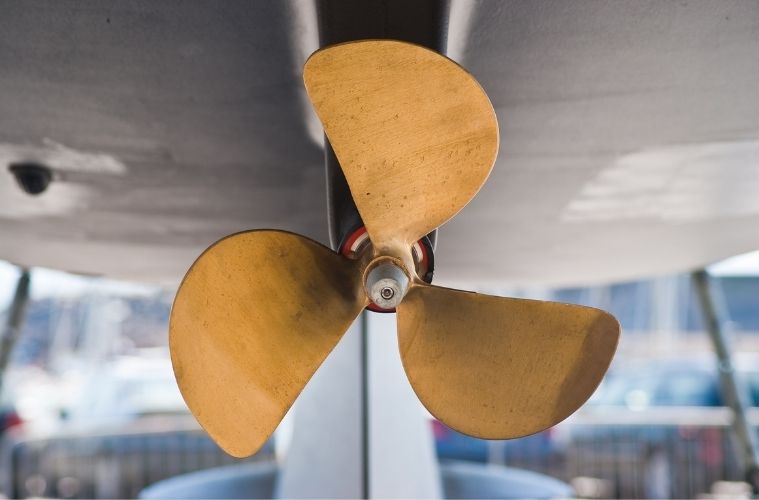The propulsion system of your boat is so important that its performance will affect the rest of your boat’s condition and performance. As such, there are several factors to consider when choosing a propeller that will help you achieve optimal performance while protecting your vessel from damages, such as your engine over-revving or being overly taxed.
Pitch and Diameter
Pleasurecraft and workboats have different needs and functions that are greatly affected by the kind of propeller with which they are outfitted. Diameter simply refers to how big of a circle a propeller forms as it rotates. The diameter is measured from the tip of one blade to the tip of the opposite blade. Once you know the diameter, you’ll be able to understand propeller pitch. The pitch of your propeller will determine the torque and speed of your vessel. Pleasurecraft typically seek to achieve greater speeds, while workboats such as towboats require greater torque over speed.
Number of Blades
The number of blades attached to the propeller has a bigger impact than you may think. Propellers commonly have three blades because they’re much faster to spin without producing much drag. However, the number of blades you want for your propeller depends on your desired efficiency, BAR, speed, suitability, and noise. More blades will grant you greater torque and acceleration, while fewer blades will increase the speed of your boat.
Engine Model
Your engine is an important factor to consider when choosing a propeller because of how close a relationship the two components have. Your available power and rev requirements will determine your vessel’s limitations and the needs of your boat for optimal performance. Adhering to your boat’s limitations and function is important to avoid damaging the engine of your boat and other components. Always prioritize the needs of your engine over your own performance desires. Otherwise, you’ll just end up damaging or killing your boat.

